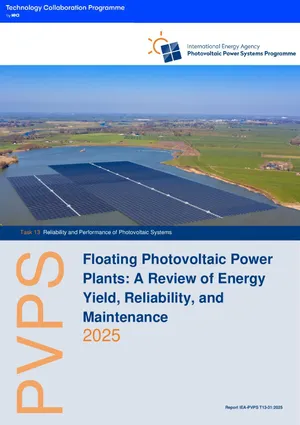This publication provides a comprehensive overview of the performance of floating PV (FPV) systems, focusing on the key aspects that distinguish FPV from traditional ground-based PV (GPV): energy yield assessment, system reliability, and operations & maintenance (O&M). As floating PV expands across inland water bodies and ventures offshore, this report aims to support its responsible and efficient deployment of inland and nearshore FPV.
Floating PV represents a promising approach to increasing solar energy capacity in land-constrained regions, enabling dual use of water surfaces while avoiding conflicts over land. However, uncertainties remain regarding yield modelling, degradation mechanisms, and the development of cost-efficient O&M strategies. This report addresses these knowledge gaps and provides practical guidance for stakeholders across the solar industry.
Key Findings
- The potential of FPV to expand solar capacity without land constraints is very promising, but uncertainties related to environmental impacts, complex or missing regulatory frameworks, and cost barriers slow its adoption.
- The report provides guidance to improve engineering judgements of FPV specific losses in energy yield assessments (EYA). The accuracy of EYA for FPV can be further improved by closing gaps in meteorological data and gaining more quantitative knowledge on loss mechanisms and degradation.
- Improvements and automation of monitoring and O&M practices, combined with more open sharing of data, can reduce costs during operation and support assessment of FPV specific stressors and reliability, ultimately leading to faster scalability.
